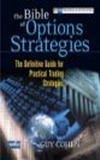VIX at New High and More
 From the above volatility table (courtesy of briefing.com), we can see that VIX is now at unprecedented highs, surpassing those experienced during the 2002 bear market, 9/11 and even the Long Term Capital Management (LTCM) crisis. The same goes for VXO, a volatility measure which has been around for a longer time than VIX, except it has not yet matched the highs of the 1987 stock market crash. At that time, the VXO is almost 3 times higher than the highs we see in VXO today. We certainly do not wish to see that happening though. The market has moved from bearish mode to panic mode now. After aggressive sell-off throughout the day, we saw a good rally into the close on Monday, resulting in long lower tail candlestick printed in many charts. All these point to a possible close to a near term bottom, but we need further supporting evidence on the chart to confirm.
From the above volatility table (courtesy of briefing.com), we can see that VIX is now at unprecedented highs, surpassing those experienced during the 2002 bear market, 9/11 and even the Long Term Capital Management (LTCM) crisis. The same goes for VXO, a volatility measure which has been around for a longer time than VIX, except it has not yet matched the highs of the 1987 stock market crash. At that time, the VXO is almost 3 times higher than the highs we see in VXO today. We certainly do not wish to see that happening though. The market has moved from bearish mode to panic mode now. After aggressive sell-off throughout the day, we saw a good rally into the close on Monday, resulting in long lower tail candlestick printed in many charts. All these point to a possible close to a near term bottom, but we need further supporting evidence on the chart to confirm.For those who are interested to find out more about VXO, you can read up here. But basically, the main differences between VIX and VXO are summarized below:
1) Different Index Base
VIX - calculated based on S&P 500 options
VXO - calculated based on OEX 100 options
2) Different Strike Prices used
VIX - all strikes prices are used, but weighted. ATM strikes have the most weightage
VXO - used only near the money strikes for calculation
Tue: FOMC Minutes
Notable earnings: AA, AYI, YUM
Wed: Pending Home Sales
Notable earnings: COST, MON
Thurs: Initial Claims, Wholesale Inventories
Fri: Trade Balance
Notable earnings: GE, INFY


















0 Comments:
Post a Comment
<< Home